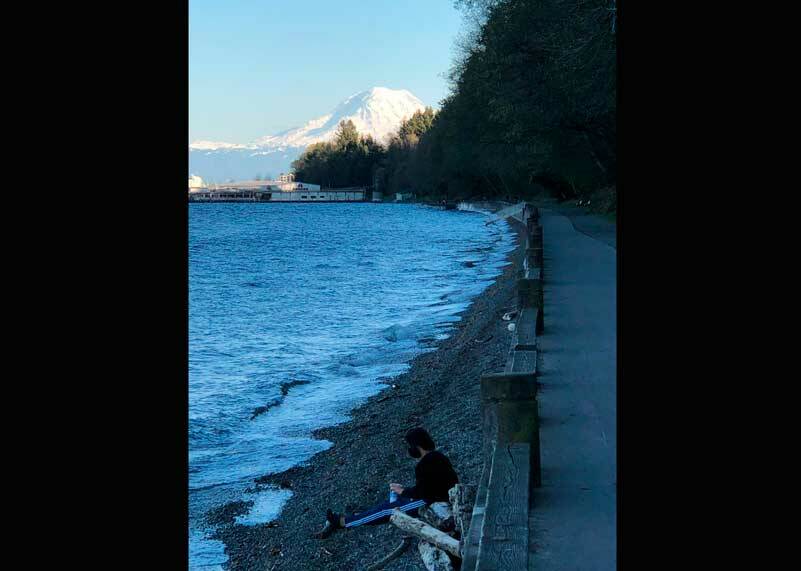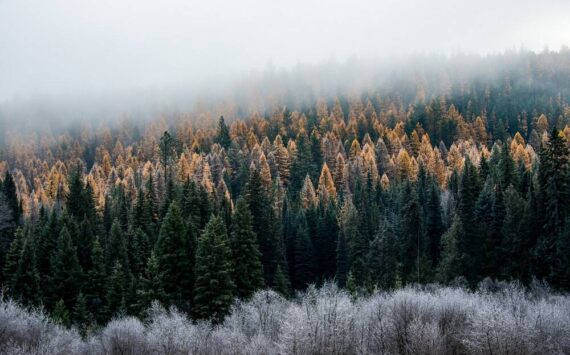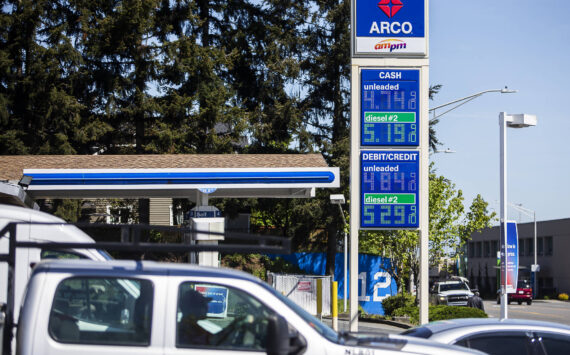By Morf Morford, Tacoma Daily Index
As with almost everything else, we in the Pacific Northwest have a split-screen view of trees. In the abstract, when it comes to trees in general, or perhaps the ideas of trees, virtually every one of us loudly (and proudly) declares ourselves as lovers of trees. But when it comes to a particular tree – or stand of trees – especially when it competes or conflicts with human or commercial needs, visions or intentions, any given tree is, without much dispute, vulnerable.
In the near relentless equation between what we call progress and a tree that may have held that spot for centuries, the tree, no matter how old, rarely prevails. Trees are on virtually every horizon, and all too often are the first thing to be “cleared” in almost any construction project.
We love trees, take them for granted, apply them for a wide range of uses, and cultivate them in our residential landscapes.
Tree canopy ain’t us
The greater Northwest area is world renowned for its trees. Flying into Sea-Tac International Airport is, for some of us, a welcome home, and for at least as many, a stunned “Look at all those trees!”
Trees, of all sizes, species and categories from deciduous (leaf-bearing) to coniferous (with cones and needles) seem to be everywhere. And there used to be far more of them.
About a century ago Tacoma was “Lumber Capital of the World”. But that was then… Tacoma’s lumber identity was loud, visible and pungent along what is now a well-used walkway that parallels Ruston Way. You can see a tribute to the era (and industry) at Dickman Mill Park, where all that’s left of Tacoma’s heritage as the “Lumber Capital of the World” are some concrete foundations, remnants of the docks and a sign explaining the history of one of the busiest mills on the waterfront. The headsaw was capable of cutting boards up to 65 feet long. Twenty-two sawmills on Commencement Bay operated non-stop 24 hours a day, seven days a week. For decades.
In the 2020s, Tacoma is not the “Lumber Capital of the World”. Tacoma is in fact one of the very few Northwest cities with a tree canopy of about 20%. Other Northwest cities, from Bellevue to Bothell and Kirkland have twice as much tree canopy as Tacoma. You can see details here.
Twenty percent is terrible. But the distribution of the tree canopy across Tacoma is even worse – far worse. Some areas (like Point Defiance) have a canopy reaching 64% while others have a canopy of well under 10%. Most of the Port of Tacoma has a canopy rate of 4%, some areas are at 3%.
Consider this excerpt from the above City of Tacoma website; Further land cover classification results of this study indicated that in 2017, the city of Tacoma landcover contained 20 percent urban tree canopy; 13 percent non-canopy vegetation; 14 percent soil/dry vegetation; 52 percent impervious surfaces; and less than 1 percent water.
According to the same research, 46% of the land in Tacoma is dedicated to single family residential with 6% used for multi-family residential. 16% is parks and 3% is shoreline. And 15% is used in manufacturing/industrial.
And if you look at the map from the City of Tacoma, the vast majority of Tacoma’s surface area holds less – even far less – than 20% tree canopy. If you take the parks and undeveloped areas out of the equation, our average tree canopy, in areas where virtually all of us live and work, is barely in the double digits.
You’d think those areas with the least tree canopy would value it the most and those areas that have an abundance would take tree canopy for granted. And given the almost default contrariness of human nature, which seems to have been distilled to a near pure state in Tacoma, the opposite is true.
You might assume that the near barren reaches of South Tacoma and Port of Tacoma would go out of their way to preserve, if not expand, the existing tree canopy. Such is not the case. Two of the biggest current or planned canopy clearing projects Tacoma has seen are in the works in those areas already deficient in tree canopy.
One, well out of view for most of us, is a crucial habitat (“critical area wetland”) in the midst of the Port of Tacoma’s asphalt and concrete landscape. You can see a profile of the property here.
The other, far larger at over 250 acres, is a barely noticeable (to most of us) plot of land between South Tacoma Way and South Tyler and approximately South 56th and Center. The land is currently a massive, and vacant, green space within what could be called a green-space/canopy desert. The proposed plan is to build a 2.5 million square foot warehouse complex and distribution center that would cover approximately the size of 50 football fields – not counting the additional non-porous surrounding paved parking areas and distribution access points.
The irony of this, if not both cases, is that Amazon, among many others, is cutting back on the amount of warehouse space they need and virtually every city is moving toward (for a variety of reasons) expanding green spaces and canopy coverage.
Wallethub did a recent study on the greenest cities in the USA. San Diego was number one, Honolulu was number 2. Portland, Oregon was number 3 and Seattle was number 5. Of the 100 greenest cities across the country, Tacoma was not even on the list. Tacoma, according to this study was less “green” than Mesa, and Glendale Arizona.
Trees impact energy use, heat distribution (and retention) and residential real estate values – among many other things.
Tacoma was once known internationally as a source for trees, but somehow has become known, within a region renowned for its greenery, as the most canopy-deficient urban area west of the Cascades.
To put it simply, we can do better than this.





